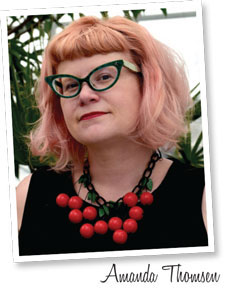7/1/2021
When the Customer is Often Wrong
Amanda Thomsen

I often get a flash of anger when someone asks me a simple gardening question instead of just Googling it. I answer SO MANY gardening questions this time of year and so many seem like just common sense, like “Yes, you have to take them out of the pot before you plant them.” My time is at a premium to me in spring and summer, and even though I do want to be available to help my friends and family, I cannot handle getting a text from someone near and dear, at the end of a long day, that asks “How do you deadhead a marigold?”
Now, the flip side of that is ... what if that person goes to Google and asks, “When do roses bloom?” instead of asking me and the answer they get is “Roses bloom in January and you must pour a cup of hot coffee on them every morning.” I mean, it could happen, right? Then they start to pour hot coffee on their roses and put it out on Facebook where it sounds so crazy it must work, even though it’s based on literally nothing, and it gets 60K shares in 24 hours.
We all know there’s some TRULY AWFUL information out there and for some reason, there’s an entire group of gardeners/customers that are inclined to believe them. This column is to help those people.
I find many new gardeners are getting their information from Instagram stars who, themselves, have only been gardening for a few years. These glamorous strangers have absolutely nothing on the line but a “❤” and if they give bad advice there’s little recourse. Negative comments are deleted and they continue to churn out content that is, at best, for the wrong zone or generally overall misguided, but at the worst is just unbridled bad information for greed or product placement.
With any bit of information found on the Internet, you have to ask yourself, “Who does this ultimately benefit?” Is it for clicks (i.e. clickbait, views on Pinterest, etc.)? Is it just for attention? Is it a major grower who’s a little loosey-goosey with the growing zones so they can try and sell more product? Is it a design service trying to muddy the water so they look deep? Is it the dubious business trying to sell you rainbow tomato seeds?
Identifying the source’s “WHY?” is a huge part of understanding whether that information is worth paying attention to or not. Setting ourselves up as a credible go-to for our communities is the goal, while also knowing you’re going to need all your patience to hear all those questions. I think it’s wise to educate customers—either in person, in newsletters or even in social media posts—that there are places they can trust Internet-based information (universities, botanic gardens and arboretums) and continue to push off phone calls to county extension offices.
We need to continue to push why customers should trust us and our info over what they saw on TikTok. Our WHYs are that we’re sharing info that pertains to our zone, local types of soil and other community peculiarities. Our reputations aren’t something that we can run from or delete. We can’t just start a new website or Insta account and start anew; we have pride of place in our communities and are accountable for what we sell and what we recommend.
Ultimately, those that pick and choose their gardening information on the Internet will have more fails than wins and potentially drop out of gardening overall. I think it’s worth trying to explain why getting their information from us is so much more sustainable, even though it’s probably going to make for some very long, grumpy advice-giving days, indeed. GP
Amanda Thomsen is a funky, punky garden writer and author. Her blog is planted at KissMyAster.com and you can follow her on Facebook, Twitter AND Instagram @KissMyAster.